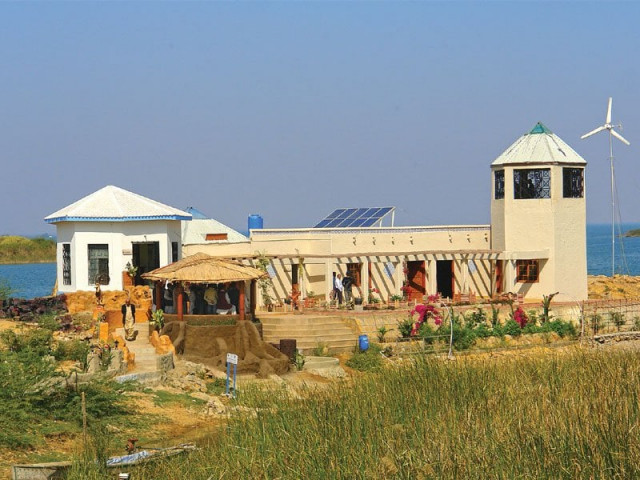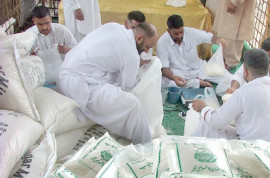
With two information technology centres, seven vocational training centres, two bakeries, 238 ice boxes, 155 solar panels, 85 biogas plants, 38 fishing matkas, 30 fishing nets and 15 wind sails, the first five-year phase of the Indus for All Programme has reached its end.
The concluding ceremony of the World Wide Fund for Nature-Pakistan’s (WWF-P) initiative was held at a hotel in Karachi on Monday. A number of government officials, academics, civil society members and local community representatives turned up at the event.
The programme took off in April 2007 under a broader 50-year vision of Indus eco-region conservation undertaken internationally by the WWF as part of 200 eco-regions spread across the globe. Funded by the Royal Netherlands Embassy in Pakistan, the project was executed by the WWF-P in collaboration with the Sindh government, selected civil society organisations and local communities.

In the first phase, the project targeted four critical ecosystems in three districts to conserve the rich biological diversity of the Indus eco-region through improvement in livelihoods of local communities. The sites included Keti Bandar (coastal ecosystem), Pai Forest (inland forest ecosystem), Keenjhar Lake (freshwater wetlands ecosystem) and Chotiari Reservoir (desert-wetland ecosystem).
The programme has played a crucial role in the revision of Sindh Wildlife Act and the Sindh Forest Act as well as rehabilitation of Haleji Lake and restoration of an internal irrigation system at Pai Forest, the Sindh forest and wildlife secretary, Mushtaq Ali Memon, elaborated while speaking at the closing ceremony of Indus for All. “Sindh is facing socio-ecological and economic problems that need to be addressed on urgent basis,” he said, committing support to the programme in its second phase.
The project aims at protecting the Indus River - the main source of water for Sindh, WWF-P senior director Dr Ejaz Ahmad said in his welcoming note at the hotel. “Conservation takes a lot of time and commitment,” he said laying particular emphasis on the support given by the government departments.

WWF-Pakistan has set up information and conservation centres in Chotiari Reservoir in Sanghar (Above) and at Keenjhar Lake in Thatta. Under the Indus for All Programme. Local communities were given biogas plants, solar panels, fishing nets and ice boxes to conserve the rich biological diversity and improve their livelihood. PHOTO: WWF-PAKISTAN
The programme addresses the issues of natural resource management, pollution, sea erosion, loss of species, deforestation, hunting of birds and animals, and poverty, said Rab Nawaz, the WWF-P Sindh director, sharing the details of the Indus for All Programme. The Indus eco-region supports rich biodiversity, including some unique species of birds and animals.
Nawaz lauded the contribution of community-based organisations, who worked as active field partners, and the media for sharing technical details and publications with a wider audience.
Examples of support extended by the programme included provision of biogas plants, solar panels, fishing nets, ice boxes, vocational training and information centres at Keenjhar Lake and Chotiari Reservoir.
Water security was pointed out as the main thematic focus to protect the Indus eco-region in the future. “In the next phase,” Nawaz said, “we look forward to financial support from the World Bank and other development agencies.”
The programme has also helped develop valuable reports in consultations with relevant groups, said Ghulam Muhammad Mahar, the director-general of the Sindh livestock and fisheries department.
“Due to the mass awareness campaign under Indus for All, people have come to know about several environmental terms such as wetlands, biodiversity and endangered species,” he added.
Published in The Express Tribune, January 2nd, 2013.


















COMMENTS
Comments are moderated and generally will be posted if they are on-topic and not abusive.
For more information, please see our Comments FAQ